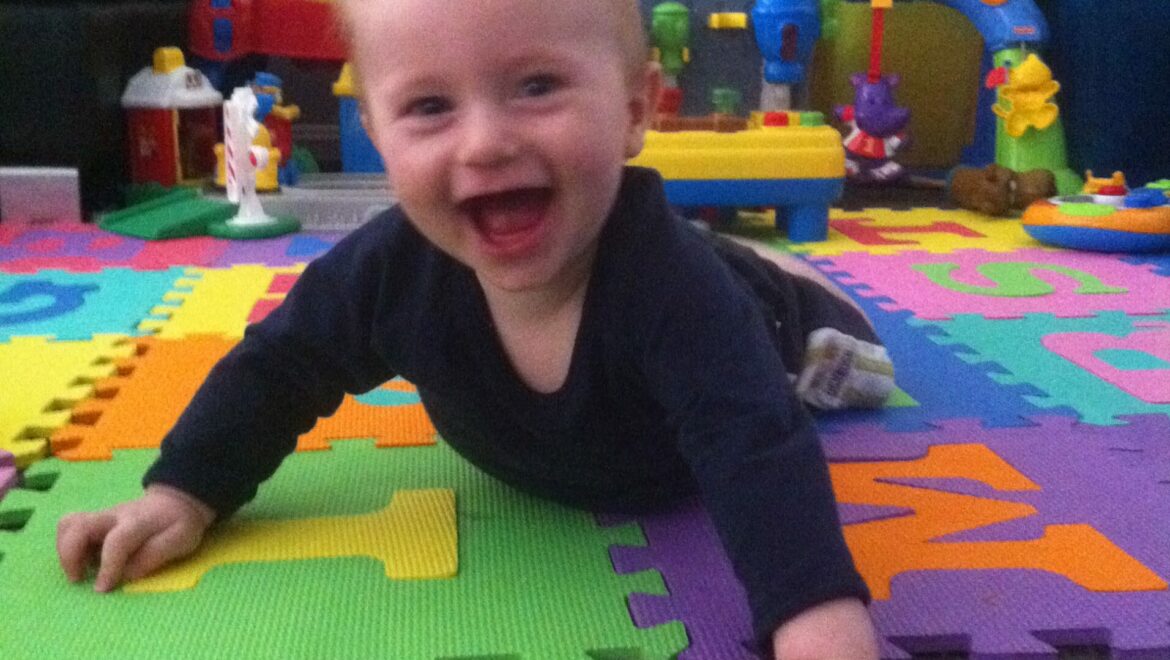SITTING
Babies will be able to sit when their head, neck and back muscles have developed enough to hold themselves up against gravity, which is typically around 6 months of age. Position your baby on their tummy for progressively longer periods of time as they will tolerate. Use favourite toys and talk to your baby from both sides to encourage them to lift their head and chest and turn their head from side to side. If your baby will not tolerate being on their tummy on the ground even for short periods, place them on your chest while you are laying on your back. Never leave your baby alone while they are on their tummy.
If your baby is having difficulty sitting independently by 9 months, consult our paediatric physiotherapist for some more suggestions to allow them to achieve this movement milestone.
CRAWLING
Crawling is an important form of movement for infants that develops postural muscle strength and bone growth through weight bearing. It promotes strength and stability of the shoulders which is required for sitting and standing and general posture. Reciprocal movement of the arms and legs develops bilateral integration, or the ability to coordinate the right and left sides of the body.
It is typical for infants to begin their progression to crawling by scooting backwards on their tummy, to swimming (with both arms and legs moving off the floor), to “commando crawling” (sliding along their tummies forwards) to rocking back and forwards on their hands and knees, to eventual reciprocal movement forwards on their hands and knees. This progression begins with your child being on their tummy, therefore tummy time is the most important factor in the development of crawling, as well as sitting, standing, walking and general gross motor development.
WALKING
Walking usually occurs between 12 and 15 months of age, but can begin as early as 9 months and as late as 18 months or more if dependent on other factors.
Generally, the age that a child walks depends on genetics, motivation, weight, ability to reach desired locations, any negative experiences and illnesses/conditions that may cause delay.
It is also important that your child follow the typical milestone development of crawling before they walk so that the postural muscles of the shoulder are able to develop typically which assists in generating adequate core muscle strength required for standing/walking and other gross motor abilities.
Every child will begin walking at a different age and when they are ready. The more time a child spends on their tummy, the stronger their postural muscles that hold them against gravity are and the sooner they will be strong enough to move independently.
For more information on encouraging your child to walk please contact our paediatric trained physiotherapists.

